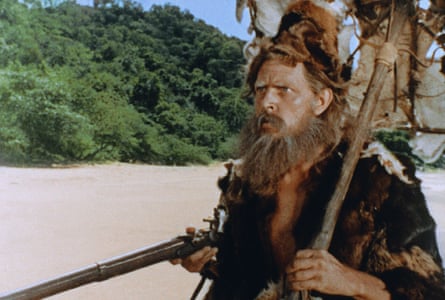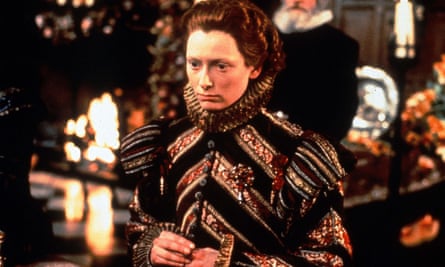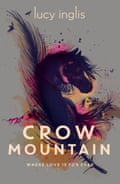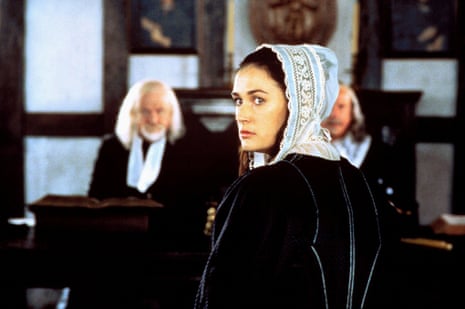My new novel, Crow Mountain, is set in Montana, and shifts between 1867 and the present day. Montana remains one of the least populated states in America, and in the 1860s barely featured on the map in terms of “civilisation”. Nate, the 19th-century protagonist, is descended from a long line of pioneers and happiest when living in the wild. Physically and mentally scarred by the American Civil War, he seeks peace in the solitude of the Rockies, until he “inherits” an English girl, Emily, after she is the sole survivor of a stagecoach accident. In the modern story, another English girl, Hope, is alone with ranch hand Cal after a car crash leaves them stranded. The book is as much a story about the wilderness itself, and what it teaches the two couples. I’ve always loved pioneer books, and these are my top 10, in no particular order.
1. The Poisonwood Bible by Barbara Kingsolver
This is about a missionary family, the Prices, who move from Georgia to the Belgian Congo in 1959. Rachel, Leah, Adah and Ruth May are the four daughters who grow and change over the course of the book. Kingsolver is a superb writer and I think Poisonwood is her finest book, bringing to life a strong female cast of individual voices. It’s the sort of writing I dream of producing.
2. Little House on the Prairie by Laura Ingalls Wilder
The Little House series, of which Prairie is the third, was based on Wilder’s own upbringing on the American frontier. Prairie is set between 1869 and 1870 in Kansas “Indian Territory” and focuses on pioneer life and tensions between white settlers and Native American people. These books are rightly beloved for their portrait of settler life in the West and I read the print off them while researching Crow Mountain.
3. The Clan of the Cave Bear by Jean M Auel
This is a book about the interactions between Cro-Magnons and Neanderthal people 18,000 years ago. Ayla, the young heroine is a “modern” girl who grows up with a Neanderthal tribe and has to learn their way of life, as well as becoming a medicine woman. Clan is the first in the Earth’s Children series, which follows Ayla’s life, and somewhat fantastically credits her with inventions and ideas which were actually the product of thousands of years of evolution, but she’s a great heroine and the imagining of the landscape of early man is an impressive achievement. Pretty much everyone in my book club read these books avidly as teenagers due to the exploration of Ayla’s sexual awakening. Secondhand copies tend to fall open at particularly “interesting” pages.
4. The Scarlet Letter by Nathaniel Hawthorne
This is set in a Puritan community in Boston, Massachusetts, between 1642 and 1649, and follows adulterous Hester Prynne’s journey to “redemption”. Henry James called the book “beautiful, admirable, extraordinary” and he’s right. The portrait not only of Hester, but the Puritans of 17th-century Boston and the realities of life in early modern America are both wonderful, and relentless.
5. The Song of the Lark by Willa Cather
This is the second in Cather’s Prairie Trilogy, set in 1890s Colorado. It features Thea Kronborg, who breaks out of small town life to become an opera singer. Lark is an often over-looked work about the tenacity of the American dream. Well worth a read.
6. Tidewater: A Novel of Pocohontas and the Jamestown Colony by Libbie Hawker
“In 1607, three ships arrive on the coast of Virginia to establish Jamestown Colony. One girl’s life - and the lives of her people - are changed forever.” It’s a well-known story, but Hawker brings the struggles of Jamestown to life, and particularly good is her rendering of Pocohontas, whose unique young voice sings from the page. A lovely, sweeping retelling of a legend.

7. Robinson Crusoe by Daniel Defoe
Or to give its full title: The Life and Strange Surprizing Adventures of Robinson Crusoe, Of York, Mariner: Who lived Eight and Twenty Years, all alone in an un-inhabited Island on the Coast of America, near the Mouth of the Great River of Oroonoque; Having been cast on Shore by Shipwreck, wherein all the Men perished but himself. With An Account how he was at last as strangely deliver’d by Pyrates. Crusoe is the original pioneer story, and is as much about what the wilderness teaches us about ourselves as it is about survival. A classic.

8. Orlando by Virginia Woolf
With a poet hero who changes gender and becomes a heroine, lives for centuries and influences the literary canon throughout, Orlando is a pioneering character in more ways than one. One of Crow Mountain’s Native American characters, Rose, also refuses to conform to gender, which wins her respect throughout the Native tribes, rather than stigma, and it was important to me that this fluidity, like Orlando’s, results in a successful life, rather than an unhappy one.
9. Twenty-Thousand Leagues Under the Sea by Jules Verne
Captain Nemo, and his sea-monster submarine, the Nautilus, are a truly memorable creation. Nemo’s determination to exile himself from society is more about his issues with authority, something that Nate, the 1867 hero of Crow Mountain would no doubt sympathise with. Nate is independent and strong-willed, but he’s also short-tempered and wild. Absenting himself from society is partly a protest against any attempt to make him conform.
10. The Sparrow by Mary Doria Russell
The Sparrow begins in 2019 and tells the story of what happens to a Jesuit priest who is chosen to be humanity’s emissary when life is found on another planet. Jesuits have been missionaries since the inception of their order, and Father Emilio Sandoz is an admirable, if not entirely likeable, pioneer. Although science fiction, The Sparrow is concerned with philosophy, and the good and evil man is capable of, sometimes unintentionally. Space, the final wilderness, is a vast canvas on which she makes the consequences of one man’s choices horrifyingly stark.

Lucy Inglis is the author of Crow Mountain. Buy it at the Guardian bookshop.
